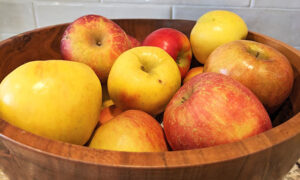
Nobody’s perfect. We were all born a tiny bit uneven, whether because of the way our freckles land on our faces or the slightly mismatched size of our feet. Nature leaves its mark on all of us — and it does the same thing to fruit.
If you’ve ever bought fruit from The FruitGuys, you might have noticed that some of our seasonal farm-fresh fruit looks different from the commercially-grown apples, pears, and oranges you see at the grocery store.
At the store, shiny red apples line up in rows like identical plastic soldiers made in a factory. But fruit that’s grown on small farms using sustainable growing methods has variations in color, shape, and texture. You might see apples and pears with brown russeting, or oranges with a green tinge to them.
Fear not: Those imperfections, or as we like to think of them, “beauty marks,” often go hand-in-hand with the superior flavor that sets small-farm fruit apart. But where do they come from?
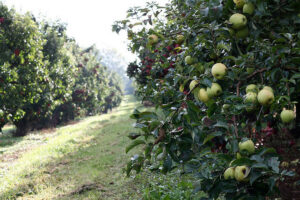 An infinite number of factors affect a fruit’s appearance and flavor, including growing conditions and weather on the farm. Sometimes the sun shines more brightly through one set of branches than another, giving one cheek of an apple more color. Other times, one tree gets more water or has more wind exposure than its neighbor, which changes the size of its fruit. Of course, every crop is also subject to the selective grace of pollinators and the random visitation of pests and disease.
An infinite number of factors affect a fruit’s appearance and flavor, including growing conditions and weather on the farm. Sometimes the sun shines more brightly through one set of branches than another, giving one cheek of an apple more color. Other times, one tree gets more water or has more wind exposure than its neighbor, which changes the size of its fruit. Of course, every crop is also subject to the selective grace of pollinators and the random visitation of pests and disease.
These factors have a large impact — especially on seasonal farm-fresh fruit from farms that practice sustainable farming techniques and don’t use industrial fungicides and pesticides. Because of them, you might notice stems at an angle, variations in color, bumps or blemishes, slight scarring, or unusual spots on your fruit.
All together, these beauty marks give family farm-grown fruit a lovely “homemade” appearance. But they’re suspiciously absent from fruit grown on large commercial farms, even though nature is present there, too. Why is that?
Nature and cultivation practices can both change a fruit’s appearance. But the humans growing the fruit have a say, too. After large growing outfits harvest their crops, they sort their fruit by appearance. Typically fruits with uniform sizes and shapes that conform to the highest United States Department of Agriculture standards make the cut, while anything “imperfect” is deemed unfit to sell whole.

This process contributes to an enormous food waste problem. The nonprofit ReFED estimates that 38% of America’s food supply went uneaten in 2022. Sorting out “imperfect” produce at the farm level creates an immense amount of food waste, and then grocery stores create even more. In 2022, retailers tossed out nearly 5 million tons of food — including more than 1.5 tons of produce. In many cases, its appearance was its only flaw.
“Nearly 50% of surplus food is currently sent to landfill, sewer, incineration, or dumped,” ReFED reports. “Another 38% is composted, left in fields to decompose, applied to land as soil amendment, or anaerobically digested … Only 11% of surplus food is ultimately channeled back into the human food supply chain, where it is consumed, donated, or incorporated into animal feed.”
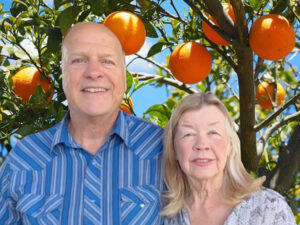
There’s food loss on smaller farms, too, but at the family farm level, a funny shape or uneven color won’t disqualify a delicious fruit from distribution. Some farmers, like citrus grower Vince Bernard of Bernard Ranch, openly prioritize flavor over appearance. Good fruit isn’t wasted on small farms simply because it doesn’t fit the mold.
When you buy small farm-grown fruit from a company like The FruitGuys, it will come with its beauty marks intact. This seasonal farm-fresh fruit often has superior flavor, even if it doesn’t look picture perfect.
Yes! Fruit with variations in color, shape, or size is safe to eat, as are most fruits with bumps, blemishes, spots, and scars. Those imperfections are just the nature of things. To learn more, we sat down with two FruitGuys experts to talk about it.
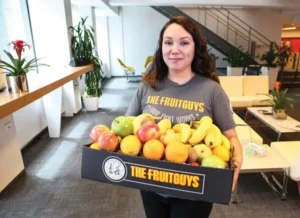
“Fruit with small flaws is almost always safe to eat,” explained FruitGuys Operations Manager Leticia Velazquez.
“Here at The FruitGuys, we’re happy to add fruit with ‘beauty marks’ to our boxes but we screen for major issues like decay, mold, and serious scarring, bruising, or pest damage. We also taste our fruit before packing to make sure only safe, healthy, and delicious produce reaches our customers. If we find fruit with serious flaws, we donate or compost it depending on its condition. When in doubt, we cull it out because our customers’ safety, health, and happiness are our top priorities.”
FruitGuys Production Supervisor Jeanette Mendez agreed, adding, “A blemished fruit is a work of art, painted by Mother Nature herself.”
Now, let’s dig into some of the most common cosmetic imperfections you might see on the seasonal farm-fresh fruit in The FruitGuys’ boxes. We’ll talk about what these flaws look like, where they come from, and more.
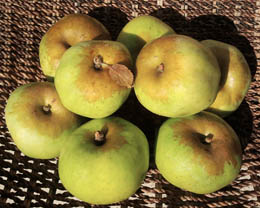
Pear and Apple Russeting – Russeting is a brownish, corky, or netlike texture that appears on some apples and pears, especially heirloom varieties. Russeting occurs because of late frost or spring humidity in the orchard. You can often spot it near the top of the fruit, but it can also spread over the whole surface. Russetted spots are safe to eat and have a pleasant nutty flavor. Look for them in apple varieties like Gravensteins, Pippins, and Jonathans, and in Bosc, d’Anjou, and Asian pears.
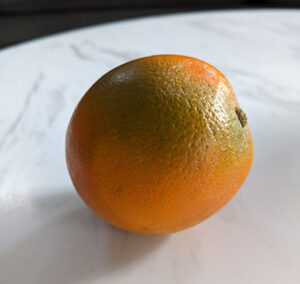
Green Oranges – Have you ever noticed that the sweetest oranges sometimes have a tinge of green to them? That’s because of a process called “citrus regreening,” which happens when excess sunlight shines in the orchard. The sun triggers chlorophyll production in the peel to help protect the fruit from sunburn. This gives it a green color that’s not only safe to eat, but, one farmer told us, may actually indicate extra sweetness.
Apple Bridal Veil – Bridal veil (also known as scarf skin) gives apples a dull, grayish sheen. Some people mistake bridal veil for pesticide residue, but in fact it’s perfectly natural. It can develop in apples because of weather conditions like excess cold, sunlight, rain, or humidity, and doesn’t change the taste of the fruit. Look for it in apple varieties like Stayman, Rome Beauty, Gala, Buckeye, and Gale.
Apple and Pear Spotting – If you look closely at an apple or pear, you’ll discover that it’s covered in tiny freckle-like spots. These spots might look like imperfections, but they’re actually a vital part of the fruit called lenticels. These “freckles” are tiny holes that let carbon dioxide and oxygen pass through the fruit’s skin.
Sometimes these freckles can develop into larger brown spots because of a lack of sunlight, low calcium, or other factors. These imperfections — including bitter pit, lenticel breakdown, and lenticel blotch pit — are easy to remove and don’t affect the taste of the fruit.
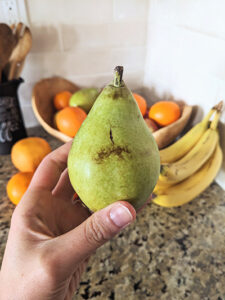
Banana Spotting – Bananas naturally develop brown spots and speckles as they ripen. These spots aren’t a cause for alarm: In fact, spotted bananas are sweeter and more nutritious than pure yellow ones. Try slicing them over oatmeal or adding them to a smoothie with yogurt, ice, and honey to enjoy at your desk.
Fruit Scarring – Fruit scars may look silvery, white, tan, or brown depending on the variety of fruit and the cause of the scar. Strong winds rub fruit and branches together and hailstones leave indents behind. Scars can also happen during the spraying, packing, and shipping process. Machinery might scratch the fruit, or one fruit’s stem might poke another. To eat a scarred fruit, simply cut away any damaged areas that worry you and enjoy.
Ultimately, nobody’s perfect — so why would we expect our fruit to be? Unrealistic beauty standards for food can be just as problematic as those for humans. So, next time you pick up a flawed apple or pear, try to look past the beauty marks and give it a taste. Flavor is what really matters. And if the fruit you’re holding is fresh from a small, family farm, it should be downright delicious.
Want to learn more about The FruitGuys’ seasonal farm-fresh fruit? Explore the Fruit Tips on our blog.
"*" indicates required fields
Take advantage of faster checkouts and other great benefits.
Create an AccountWe are here to help you provide healthy food, meaning, and a reason to gather in your workplace.
From weekly mixed fruit for break rooms to monthly gifts for remote staff to special projects, we can serve your needs or turn your dreams into a nourishing reality.
Get your weekly dose of the latest fruit info and exclusive updates.
"*" indicates required fields

